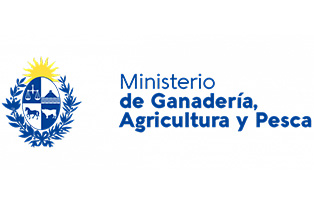National Livestock Information System
Description
The National Livestock Information System (SNIG) is created through an international public tender by the Ministry of Livestock, Agriculture, and Fisheries of Uruguay (MGAP) funded by the World Bank.

Client:
Ministry of Livestock, Agriculture, and Fisheries of Uruguay (MGAP)
Project/System:
SNIG
Categories:
The National Livestock Information System (SNIG) is created through an international public tender by the Ministry of Livestock, Agriculture, and Fisheries of Uruguay (MGAP) funded by the World Bank.
The tender was awarded to a consortium composed of the companies Genexus Consulting, ICA, and Sonda, where Genexus Consulting is responsible for developing the management system, while ICA provides and manages the optical form processing system and the geographic information system, and Sonda is responsible for providing and maintaining the facilities, data center, and equipment.
The SNIG reflects the current and historical situation of basic attributes such as ownership, location, and health status of the national cattle herd. It provides functional tools to various areas of the MGAP involved, allowing them to promote, regulate, and audit the activities of the sector.
The main objective of the SNIG is to ensure the traceability of livestock from the origin establishment of the animal to the slaughterhouse, in accordance with the provisions and regulations of the MGAP.
The solution was based on two parallel strategies: the consolidation and optimization of the group traceability system and the introduction of individual traceability for cattle.
To improve the quality of the existing information and optimize the group traceability system, it was necessary to redesign, integrate, and coordinate the various subsystems into a single system with a centralized database that could provide reliable, up-to-date, and georeferenced information. Additionally, an optical form processing system was introduced to automate the processing of forms and improve data quality.
The distribution of the animal population across the territory, as well as the details of their movements, is a fundamental factor to consider from a health perspective. To address this, a fully integrated Geographic Information System was implemented, which allows each of the establishments to be located on the map and visualizes the origin and destination of each movement.
Cattle Registration and Monitoring: The SNIG allows for an up-to-date and georeferenced record of all livestock establishments and existing cattle in the country. This facilitates the tracking and control of animal movements, contributing to disease prevention and enabling a rapid response to health emergencies.
Transparency and Trust: The system provides detailed information about the origin and history of livestock, ensuring traceability from the field to the slaughterhouse. This is especially important for accessing international markets, where high standards of quality and food safety are required.
Support for Decision-Making: The system provides statistical data and analysis of the livestock sector’s situation, facilitating decision-making by sector policy and planning authorities.
Integration with Other Systems: The system integrates and provides information to other information systems, such as the animal health system and INAC, among others.
2012
The MGAP was recognized for its National Livestock Information System (SNIG) at the ESRI Latin American Users Conference.
2013
Uruguay received the INNOVATIC Award for the project: “Strengthening Security in the Movement of Livestock.”
2014
The MGAP received the WSIS Award, organized by the United Nations, for its National Livestock Information System (SNIG).
CONTACT US